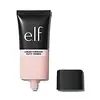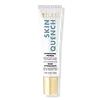What's inside
What's inside
 Key Ingredients
Key Ingredients

 Benefits
Benefits

 Concerns
Concerns

 Ingredients Side-by-side
Ingredients Side-by-side

Water
Skin ConditioningDimethicone
EmollientHdi/Trimethylol Hexyllactone Crosspolymer
Trimethylsiloxysilicate
EmollientGlycerin
HumectantC9-12 Alkane
SolventPolymethylsilsesquioxane
Cetyl PEG/PPG-10/1 Dimethicone
EmulsifyingPropylene Glycol
HumectantHydrogenated Polyisobutene
EmollientDimethicone/Vinyl Dimethicone Crosspolymer
Skin ConditioningSodium Chloride
MaskingPolyglyceryl-4 Isostearate
EmulsifyingPhenoxyethanol
PreservativeDisteardimonium Hectorite
StabilisingSilica
AbrasivePropylene Carbonate
SolventEthylhexylglycerin
Skin ConditioningCaprylyl Glycol
EmollientDisodium EDTA
Triethoxycaprylylsilane
Squalane
EmollientButylene Glycol
HumectantHydroxypropyl Cyclodextrin
MaskingCyclodextrin
AbsorbentPolydextrose
HumectantResveratrol
AntioxidantTocopherol
AntioxidantCamellia Sinensis Leaf Extract
AntimicrobialTitanium Dioxide
Cosmetic ColorantIron Oxides
Water, Dimethicone, Hdi/Trimethylol Hexyllactone Crosspolymer, Trimethylsiloxysilicate, Glycerin, C9-12 Alkane, Polymethylsilsesquioxane, Cetyl PEG/PPG-10/1 Dimethicone, Propylene Glycol, Hydrogenated Polyisobutene, Dimethicone/Vinyl Dimethicone Crosspolymer, Sodium Chloride, Polyglyceryl-4 Isostearate, Phenoxyethanol, Disteardimonium Hectorite, Silica, Propylene Carbonate, Ethylhexylglycerin, Caprylyl Glycol, Disodium EDTA, Triethoxycaprylylsilane, Squalane, Butylene Glycol, Hydroxypropyl Cyclodextrin, Cyclodextrin, Polydextrose, Resveratrol, Tocopherol, Camellia Sinensis Leaf Extract, Titanium Dioxide, Iron Oxides
Water
Skin ConditioningCaprylic/Capric Triglyceride
MaskingDimethicone
EmollientEthylhexyl Palmitate
EmollientGlycerin
HumectantHydroxypropylcocoate PEG-8 Dimethicone
EmollientNeopentyl Glycol Diheptanoate
EmollientPolymethylsilsesquioxane
Isododecane
EmollientPolyglyceryl-4 Diisostearate/Polyhydroxystearate/Sebacate
EmulsifyingStearalkonium Bentonite
Gel FormingPolyglyceryl-3 Oleate
EmulsifyingDimethicone Crosspolymer
Emulsion StabilisingCocos Nucifera Water
MaskingCocos Nucifera Fruit Juice
EmollientAllantoin
Skin ConditioningDiisostearoyl Polyglyceryl-3 Dimer Dilinoleate
EmollientSodium Hyaluronate
HumectantSilica
AbrasivePropylene Carbonate
SolventEthylhexylglycerin
Skin ConditioningTocopherol
AntioxidantMagnesium Sulfate
Sodium Chloride
MaskingSodium Hydroxide
BufferingGlycine Soja Oil
EmollientPotassium Sorbate
PreservativeSodium Benzoate
MaskingPhenoxyethanol
PreservativeWater, Caprylic/Capric Triglyceride, Dimethicone, Ethylhexyl Palmitate, Glycerin, Hydroxypropylcocoate PEG-8 Dimethicone, Neopentyl Glycol Diheptanoate, Polymethylsilsesquioxane, Isododecane, Polyglyceryl-4 Diisostearate/Polyhydroxystearate/Sebacate, Stearalkonium Bentonite, Polyglyceryl-3 Oleate, Dimethicone Crosspolymer, Cocos Nucifera Water, Cocos Nucifera Fruit Juice, Allantoin, Diisostearoyl Polyglyceryl-3 Dimer Dilinoleate, Sodium Hyaluronate, Silica, Propylene Carbonate, Ethylhexylglycerin, Tocopherol, Magnesium Sulfate, Sodium Chloride, Sodium Hydroxide, Glycine Soja Oil, Potassium Sorbate, Sodium Benzoate, Phenoxyethanol
 Reviews
Reviews

Ingredients Explained
These ingredients are found in both products.
Ingredients higher up in an ingredient list are typically present in a larger amount.
Dimethicone is a type of synthetic silicone created from natural materials such as quartz.
What it does:
Dimethicone comes in different viscosities:
Depending on the viscosity, dimethicone has different properties.
Ingredients lists don't always show which type is used, so we recommend reaching out to the brand if you have questions about the viscosity.
This ingredient is unlikely to cause irritation because it does not get absorbed into skin. However, people with silicone allergies should be careful about using this ingredient.
Note: Dimethicone may contribute to pilling. This is because it is not oil or water soluble, so pilling may occur when layered with products. When mixed with heavy oils in a formula, the outcome is also quite greasy.
Learn more about DimethiconeEthylhexylglycerin (we can't pronounce this either) is commonly used as a preservative and skin softener. It is derived from glyceryl.
You might see Ethylhexylglycerin often paired with other preservatives such as phenoxyethanol. Ethylhexylglycerin has been found to increase the effectiveness of these other preservatives.
Glycerin is already naturally found in your skin. It helps moisturize and protect your skin.
A study from 2016 found glycerin to be more effective as a humectant than AHAs and hyaluronic acid.
As a humectant, it helps the skin stay hydrated by pulling moisture to your skin. The low molecular weight of glycerin allows it to pull moisture into the deeper layers of your skin.
Hydrated skin improves your skin barrier; Your skin barrier helps protect against irritants and bacteria.
Glycerin has also been found to have antimicrobial and antiviral properties. Due to these properties, glycerin is often used in wound and burn treatments.
In cosmetics, glycerin is usually derived from plants such as soybean or palm. However, it can also be sourced from animals, such as tallow or animal fat.
This ingredient is organic, colorless, odorless, and non-toxic.
Glycerin is the name for this ingredient in American English. British English uses Glycerol/Glycerine.
Learn more about GlycerinPhenoxyethanol is a preservative that has germicide, antimicrobial, and aromatic properties. Studies show that phenoxyethanol can prevent microbial growth. By itself, it has a scent that is similar to that of a rose.
It's often used in formulations along with Caprylyl Glycol to preserve the shelf life of products.
Polymethylsilsesquioxane is a silicone used as a film forming agent.
When applied to the skin, this ingredient creates an invisible film on the surface. This film still allows oxygen to pass through, but prevents moisture from escaping. This can help condition and hydrate the skin. It also leaves a silky feel when applied.
Polymethylsilsesquioxane has not been shown to clog pores. It has been deemed safe to use up to 55%, but most cosmetics use much less.
If you have concerns about using this ingredient, we recommend speaking with a professional.
Learn more about PolymethylsilsesquioxaneThis ingredient is a solvent. It helps dissolve active ingredients and alter the texture of products.
Propylene Carbonate is commonly used in makeup and with clay, such as montmorillonite or bentonite.
Studies show this ingredient to be safe for cosmetics. When it is undiluted, it can cause skin irritation. (It is always diluted in skincare and makeup). This ingredient is water-soluble.
Propylene Carbonate is created from propylene glycol and carbonic acid.
Learn more about Propylene CarbonateSilica, also known as silicon dioxide, is a naturally occurring mineral. It is used as a fine, spherical, and porous powder in cosmetics.
Though it has exfoliant properties, the function of silica varies depending on the product.
The unique structure of silica enhances the spreadability and adds smoothness, making it a great texture enhancer.
It is also used as an active carrier, emulsifier, and mattifier due to its ability to absorb excess oil.
In some products, tiny microneedles called spicules are made from silica or hydrolyzed sponge. When you rub them in, they lightly polish away dead skin layers and enhance the penetration of active ingredients.
Learn more about SilicaChances are, you eat sodium chloride every day. Sodium Chloride is also known as table salt.
This ingredient has many purposes in skincare: thickener, emulsifier, and exfoliator.
You'll most likely find this ingredient in cleansers where it is used to create a gel-like texture. As an emulsifier, it also prevents ingredients from separating.
There is much debate on whether this ingredient is comedogenic. The short answer - comedogenic ratings don't tell the whole story. Learn more about comegodenic ratings here.
The concensus about this ingredient causing acne seems to be divided. Research is needed to understand if this ingredient does cause acne.
Scrubs may use salt as the primary exfoliating ingredient.
Learn more about Sodium ChlorideTocopherol (also known as Vitamin E) is a common antioxidant used to help protect the skin from free-radicals and strengthen the skin barrier. It's also fat soluble - this means our skin is great at absorbing it.
Vitamin E also helps keep your natural skin lipids healthy. Your lipid skin barrier naturally consists of lipids, ceramides, and fatty acids. Vitamin E offers extra protection for your skin’s lipid barrier, keeping your skin healthy and nourished.
Another benefit is a bit of UV protection. Vitamin E helps reduce the damage caused by UVB rays. (It should not replace your sunscreen). Combining it with Vitamin C can decrease sunburned cells and hyperpigmentation after UV exposure.
You might have noticed Vitamin E + C often paired together. This is because it is great at stabilizing Vitamin C. Using the two together helps increase the effectiveness of both ingredients.
There are often claims that Vitamin E can reduce/prevent scarring, but these claims haven't been confirmed by scientific research.
Learn more about TocopherolWater. It's the most common cosmetic ingredient of all. You'll usually see it at the top of ingredient lists, meaning that it makes up the largest part of the product.
So why is it so popular? Water most often acts as a solvent - this means that it helps dissolve other ingredients into the formulation.
You'll also recognize water as that liquid we all need to stay alive. If you see this, drink a glass of water. Stay hydrated!
Learn more about Water